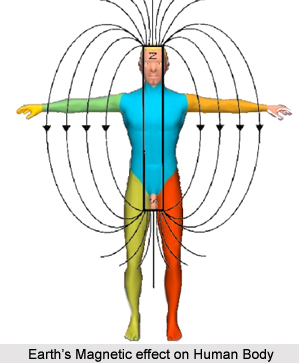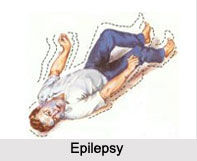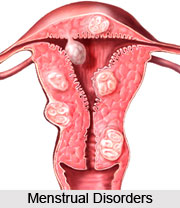Food allergy in India is quite common due to the allergic ingredients of the Indian dishes. Food allergy is distinct from other adverse responses to food, such as food intolerance, pharmacological reactions, and toxin-mediated reactions. Food allergies include reactions from toxins, caffeine tremors, cheese/wine (tyramine), scombroid (histamine), fish poisoning, bacterial food poisoning, lactase deficiency and many more.
The food protein triggering the allergic response is termed as food allergen that causes food allergy. Almost 12 million people have food allergies annually and the prevalence is rising in the contemporary world. Six to eight percent of children are under the age of three and have food allergies and nearly four percent of adults also have them. Food allergies cause roughly 30,000 emergency treatments and 100 to 200 deaths per year in the nation. The most common food allergies that can occur in adults are shellfish, peanuts, tree nuts, fish, and eggs and the most common food allergies in children are milk, eggs, prawn, brinjal, Colocassia stems, peanuts, and tree nuts.
Signs and symptoms of food allergy refer to the instant hypersensitivity reactions. These allergic reactions have an acute commencement and include several forms. Angioedema is a symptom of food allergy that shows soft tissue swelling, usually involving the eyelids, face, lips, and tongue. Angioedema may also result in severe swelling of the tongue as well as the larynx (voice box) and trachea, thus resulting in upper airway obstruction and difficulty breathing. Itching of the mouth, throat, eyes, skin, nausea, vomiting, diarrhea, stomach cramps, and abdominal pain are also the primary symptoms of food allergy. This group of symptoms is known as the gastrointestinal hypersensitivity or anaphylaxis. Rhinorrhea, nasal congestion, along with wheezing, scratchy throat, shortness of breath, or difficulty swallowing also occurs in food allergy. However, Anaphylaxis is a severe, whole-body allergic reaction that can even prove to be fatal.
Food allergy is thought to develop more easily in patients with the atopic syndrome, a very common combination of diseases, like allergic rhinitis and conjunctivitis, eczema and asthma. The syndrome has a strong inherited component; a family history of allergic diseases can be indicative of the atopic syndrome. The main categories of food allergy include dairy allergy, egg allergy, peanut allergy, tree nut allergy, seafood allergy, shellfish allergy, soy allergy and wheat allergy. These factors are often referred to as "the big eight" and they account for over 90% of the food allergies in the world.
The maximum affecting allergens vary somewhat from country to country, however milk, eggs, peanuts, treenuts, fish, shellfish, soy, wheat and sesame are the common allergens in India. Red meat allergy is extremely rare in the general population, but a geographic cluster of people in India allergic to red meat and there appears to be a possible association between localised reaction to tick bite and the development of red meat allergy. Fruit allergies occur from fruits like apples, pears, jackfruit and so on. Corn allergy is sometimes difficult to recognize in places where corn derivatives are common in the food supply.
The best method for diagnosing food allergy is to be judged by an allergist. The allergist will evaluate the patient`s history and the symptoms or reactions that have been prominent after food ingestion. If the allergist feels the symptoms or reactions are prevalent with food allergy and immediately allergy tests should be done.
Some of the food allergy tests of India include skin prick testing that is easy to do and results are available in minutes. Different allergists may use different devices for skin prick testing. Some use a "bifurcated needle", which resembles a fork with 2 prongs. Others use a "multi-test", which look like a small board with several pins sticking out of it. In these tests, a tiny amount of the suspected allergen is put onto the skin or into a testing device, and the device is placed on the skin to prick the top layer of skin. This puts a small amount of the allergen under the skin. Immediately a hive will form at any spot where the person is allergic and not if the person does not have allergic properties.
Blood tests are another useful diagnostic tool for evaluating food allergy allergens or antibodies. Blind food challenges are another method of testing food allergy that involve packaging the suspected allergen into a capsule, giving it to the patient, and observing the patient for signs or symptoms of an allergic reaction. Due to the risk of anaphylaxis, food challenges are usually conducted in a hospital environment in the presence of a doctor.
Some severe effects of food allergy may include lactose intolerance that generally develops later in life but are present in young patients in severe cases. This is due to an enzyme deficiency (lactase). Celiac disease is an autoimmune disorder triggered by gluten proteins such as gliadin. Any food allergy has the potential to cause a fatal reaction if not attended immediately.
Treatment of food allergy consists of avoiding allergic diets, in which the allergic person should avoid all forms of the food to which they are allergic. For people who are extremely sensitive, this also involves the total avoidance of any exposure with the allergen, including touching or inhaling the problematic food as well as touching any surfaces that may have come into contact with it. Many researches related to food allergy stated that anti-IgE antibody (omalizumab, or Xolair) and specific oral tolerance induction (SOTI) have shown some positive signs of food allergy treatment.




















